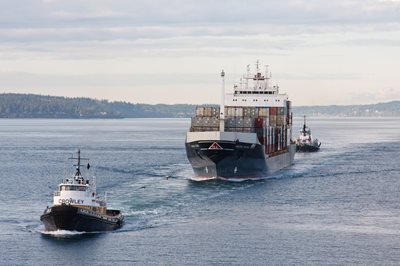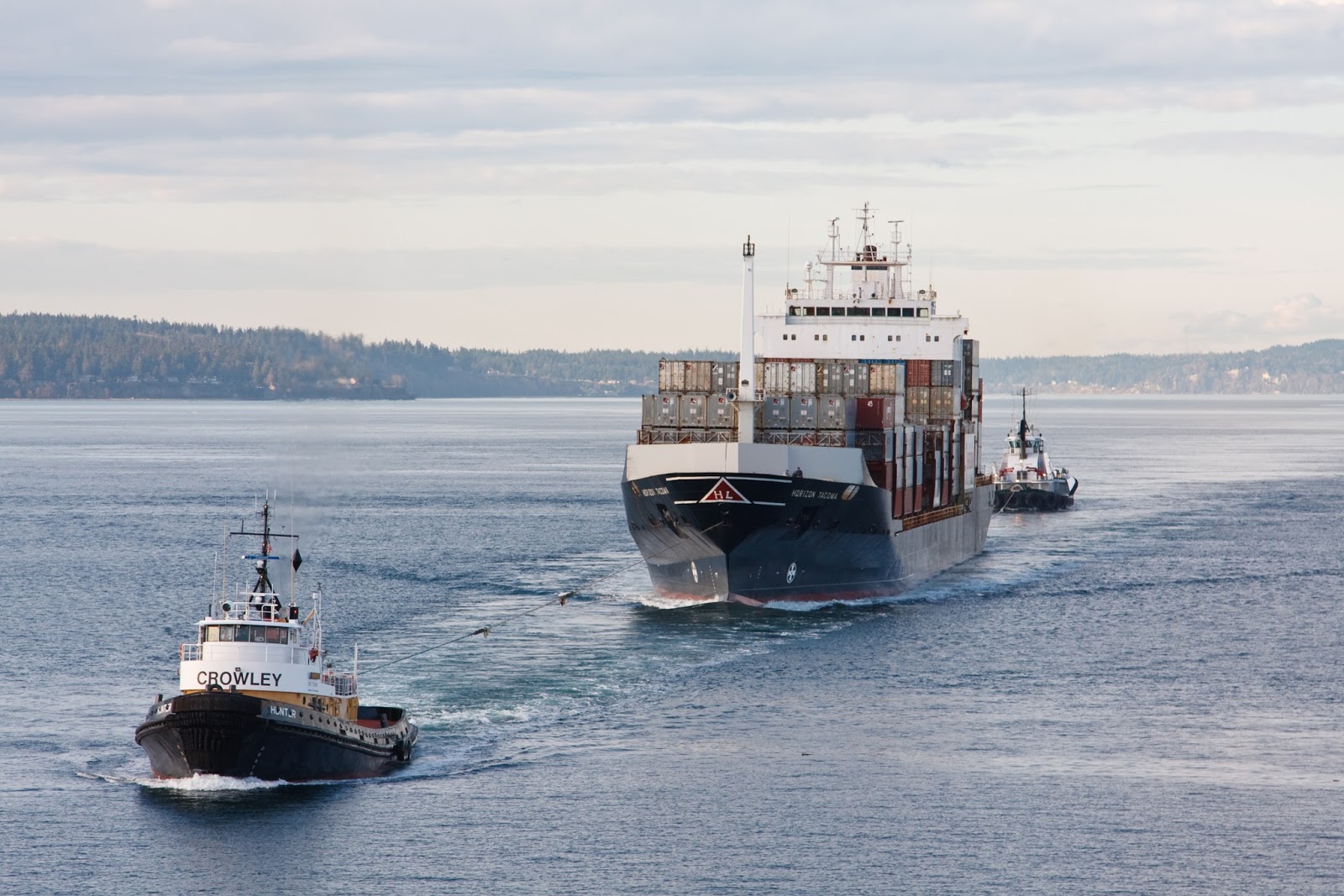
The March 24, 1989, Exxon Valdez oil spill was one of the worst vessel spills in history. Exxon Valdez oil spill cleanup worker, Aug. 8, 1989. Photo from CC BY-SA 2.0.
Eleven million gallons of crude oil spilled into Alaska’s Prince William Sound after the 987-foot oil tanker struck Bligh Reef. The toxic spill killed thousands of sea birds. Many marine animals also perished, including sea otters, orca whales, and bald eagles.
Just three months earlier, Washington experienced one of the worst-ever oil spills, fouling more than 100 miles of the Pacific Coast.
In heavy seas, the Nestucca — a 300-foot tank barge loaded with heavy fuel oil — snapped free from a tug’s tow line near the entrance to Grays Harbor. As the tug crew worked to come alongside to board the barge and reconnect the tow line, the tug hit the side of the barge hard, creating a hole that released 231,000 gallons of fuel oil over the next several days.
In the following months, the oil reached large sections of the western coast of Canada’s Vancouver Island. The spill killed tens of thousands of sea birds.
History is worth remembering
Catastrophic spills like these form the backdrop for Washington’s drive to maintain a strong spill prevention program. They are a large part of the reason why we’ve had a permanently stationed emergency response tug at Neah Bay for the last 19 years.
Washington’s drive for oil spill prevention continues today. The recently passed 2018 Strengthening Oil Transportation Safety Act requires us to take a variety of steps to promote the safety of marine transportation and protect the Salish Sea from oil spills. One of our tasks under the Act is to develop a report for the Legislature that will include recommendations about an emergency response system for Haro Strait, Boundary Pass and Rosario Strait, which could lead to a stronger safety net for Washington and the waters it shares with Canada.
In 2010, this 712-foot container ship three miles off Neah Bay when smoke started coming from a turbocharger on the propulsion engine. To prevent engine damage, the engineer recommended that the captain shut down the engine. The state’s emergency response tug, Hunter, quickly responded and towed the ship to Tacoma, with assistance from an escort tug. Photo from Crowley Maritime Corp.
Emergency response tug is a safety net
The Emergency Response Towing Vessel (ERTV) at Neah Bay is a powerful, fully-equipped tug that stands ready around the clock to assist disabled vessels and barges off the Pacific coast or in the Western Strait of Juan de Fuca. Vessels calling for the tug may have lost propulsion, lost steering, or suffered some other type of problem, leaving them vulnerable to running aground and spilling oil.
The tug’s mission is to get a line on any disabled vessels to keep them from grounding. The tug not only prevents shipwrecks, it protects our coast from oil spills, and helps keep our shipping lanes open, which are important to the regional and worldwide economy. The tug is a safety net for all vessels — for those that carry oil as a commodity and those that carry a large amount of fuel on board for transportation.
The birth of the emergency response tug
Washington leaders established the emergency rescue tug in 1999 and initially funded it during winter months only, when the winds and seas on our coast are most treacherous.
Neah Bay was chosen as a strategic home base because it is the marine transportation crossroads of the Strait of Juan de Fuca and the Pacific Ocean. It’s the gateway to multiple Washington and Canadian ports, Naval Base Kitsap, which is one of the world’s largest naval complexes, and five Washington refineries.
Importantly, the location was chosen because there’s a lot at stake here — the cultural resources of the Makah Tribe, the Olympic Coast National Marine Sanctuary, the Olympic National Park, the Makah National Fish Hatchery, and Flattery Rocks National Wildlife Refuge.
By 2008, the Washington Legislature committed $3.6 million to fund a full-time, year-round tug to protect our waters.
In 2010, the Legislature decided that the vessels using the shipping lanes should pay for the safety net, so the tug program moved from being state funded to being funded by the industry. By this time, the state had paid for the tug for 11 years.
Today the tug is funded by commercial cargo, passenger vessels of 300 or more gross tons, and tank vessels that transit to or from Washington ports through the Strait of Juan de Fuca. All of these vessels are required to have oil spill contingency plans to prepare for possible spills. These contingency plans spell out the details on how and when to call the tug.
The Marine Exchange of Puget Sound, a local shipping cooperative, collects fees from the vessels and decides which tug company gets the contract. The tug company currently under contract is Foss Maritime.
Both Ecology and the U.S. Coast Guard can request a deployment of the emergency response tug if needed.
Did you know?
Since 1999, the emergency response tug has been called out 67 times, mostly to escort partially disabled ships as a precaution, and sometimes to tow a vessel into port. Since the start of 2018, the tug Denise Foss has already been deployed three times.
- Jan. 31: Traveled 530 miles to tow the 961-foot container ship MV MOL Prestige, which lost propulsion after it suffered a fire west of British Columbia’s Queen Charlotte Islands.
- Feb. 22: Rescued a 656-foot bulk carrier Federal Iris, with more than 500,000 gallons of fuel onboard, after it suffered an engine room explosion 127 miles west of the mouth of the Columbia River. The tug got a tow line on the ship the next day.
- On March 25: Deployed to assist the 958-foot bulk carrier MV HL Passion inbound for Canada that was having engine problems just north of Neah Bay. When the tug arrived, the crew had restarted the engine, but the tug stayed alongside and escorted the ship to Port Angeles.
Lots of oil moves through Washington
More than 20 billion gallons of oil is transported through Washington each year by vessel, pipeline, road and rail. We have one of the lowest oil spill rates because we have one of the most comprehensive spill prevention, preparedness, and response programs in the nation. Industry commitment and collaboration have helped us build a strong safety net.
We remain vigilant to prevent spills, in part, because we keep a close eye on the evolving nature of oil movement.
Find out more about the Neah Bay emergency response tug by visiting our website and our interactive map.



